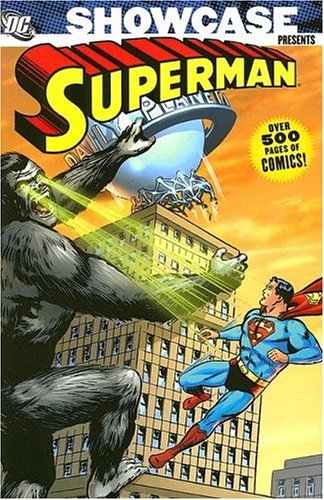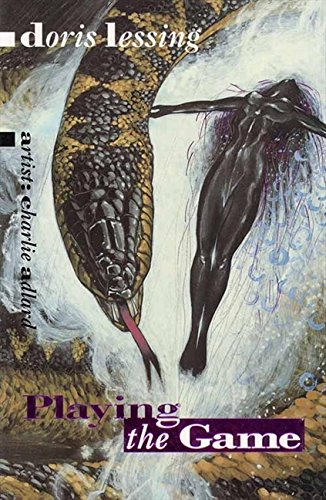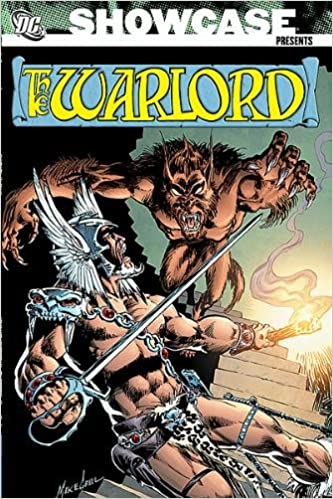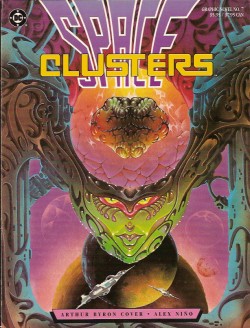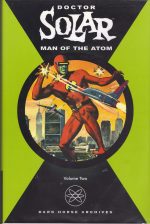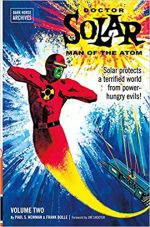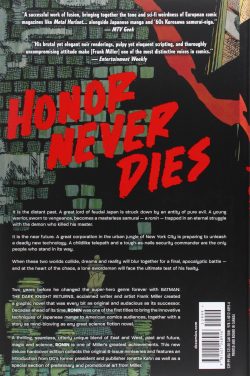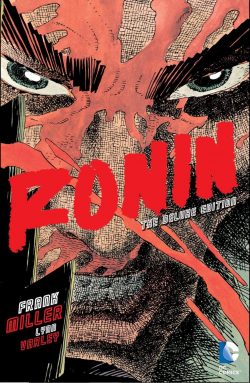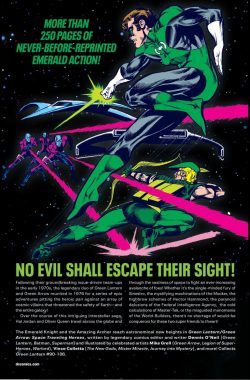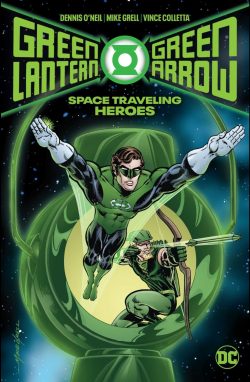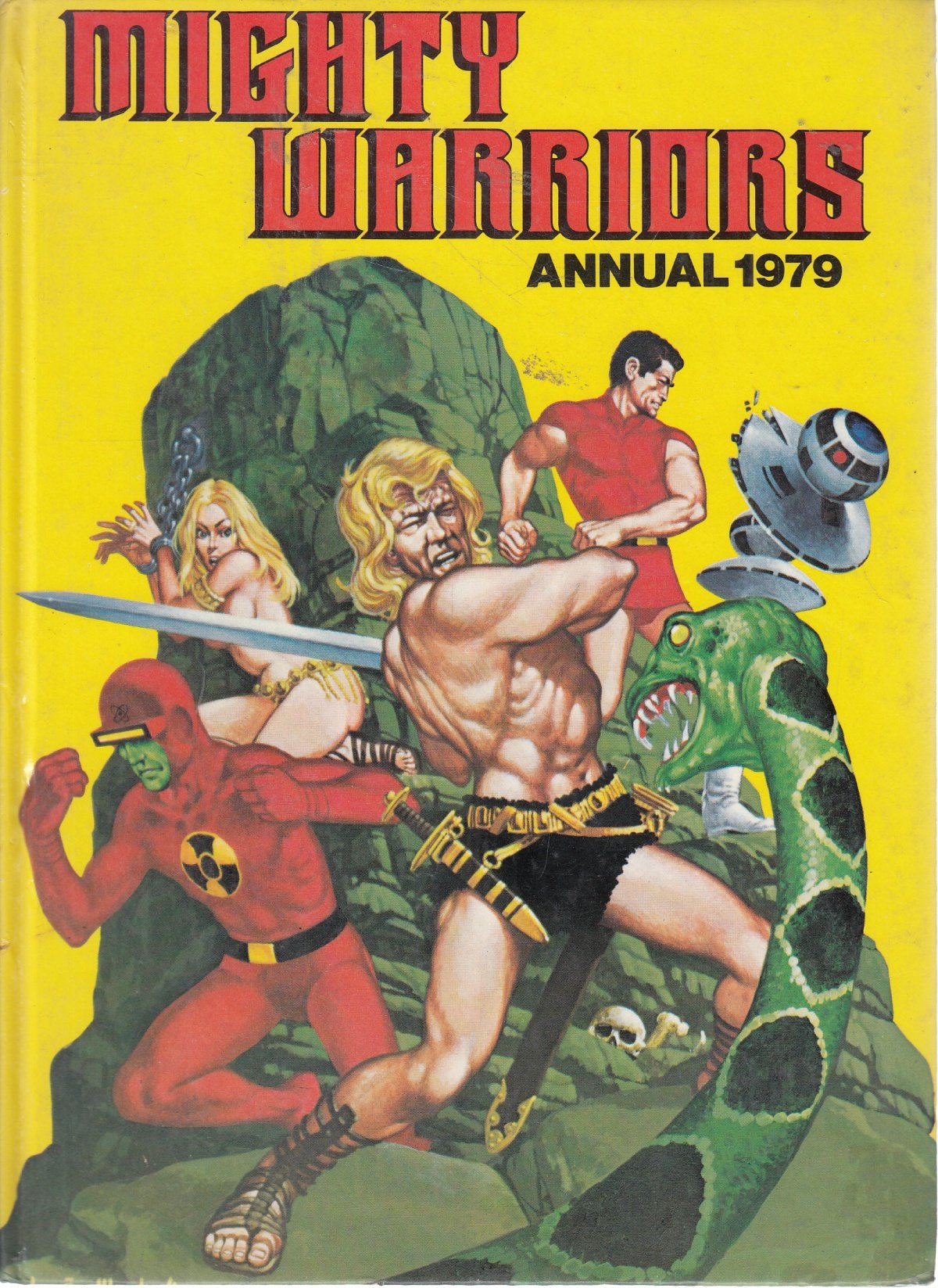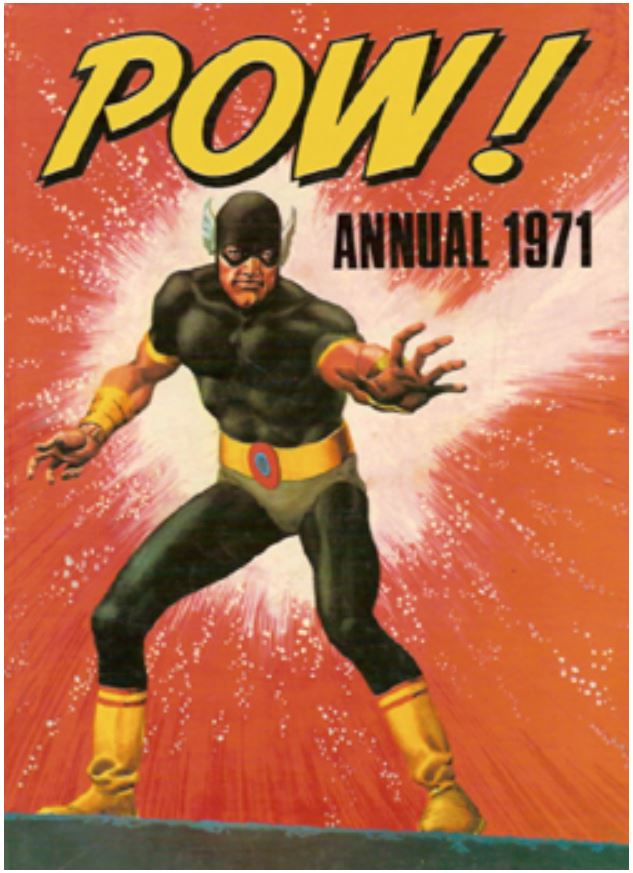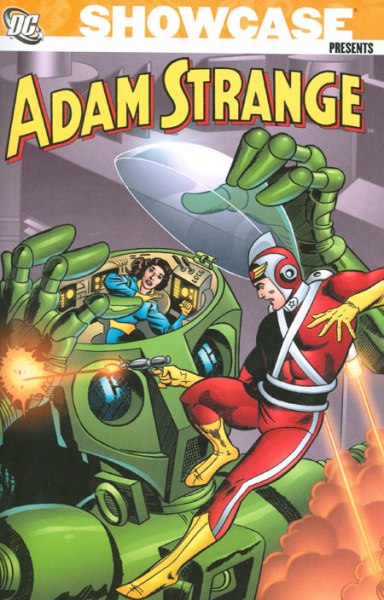
By Gardner Fox, Mike Sekowsky, Carmine Infantino & various (DC Comics)
ISBN: 978-1-4012-1313-8 (TPB)
Oooh, look! Married With Jetpacks. It’s a glimpse of true heaven…
For many, the Silver Age of comics is the ideal era. Varnished by nostalgia (because that’s when most of us caught this crazy graphic bug), the clean-cut, uncomplicated optimism of the late 1950s and early 1960s produced captivating heroes and villains who were still far less terrifying than the Cold War baddies which troubled the grown-ups. Boy. look how much things have changed today…
The sheer talent and professionalism of the creators working in that spectacularly vivid world resulted in triumph after triumph which brightened young lives and still glow today with quality and achievement.
One of the most compelling stars of those days was an ordinary Earthling who commuted to another world for spectacular adventures, armed with nothing more than a ray-gun, a jetpack and his own ingenuity. His name was Adam Strange, and like so many of that era’s triumphs he was the brainchild of Julius Schwartz and his close team of creative stars.
Showcase was a try-out comic designed to launch new series and concepts with minimal commitment of publishing resources. If a new character sold well initially, a regular series would follow. The process had already worked with great success. Frogmen, The Flash, Challengers of the Unknown and Lois Lane had all won their own new titles or feature spots in established books, and Editorial Director Irwin Donenfeld now wanted his two Showcase editors to create science fiction heroes to capitalise on the twin zeitgeists of the Space Race and current popular fascination with movie monsters and aliens.
Jack Schiff came up with the future crimefighter Space Ranger (premiering in issues #15-16) and Schwartz went to Gardner F. Fox, Mike Sekowsky & Bernard Sachs to craft the saga of a modern-day explorer in the most uncharted territory yet imagined.
Showcase #17 (cover-dated November/December 1958) launched ‘Adventures on Other Worlds’. It told of an archaeologist who, whilst fleeing from enraged villagers in Peru, jumps a 25 ft. chasm only to be hit by a stray teleport beam from a planet orbiting Alpha Centauri. He materialises in another world filled with giant plants and monsters, and is rescued by a beautiful woman named Alanna who teaches him her language.
‘Secret of the Eternal City!’ reveals that planet Rann is recovering from atomic war, and the beam was in fact a simple flare: one of many sent in an attempt to communicate with other races. In the four years since (speed of light, right? – Alpha Centauri is about 4.3 light years from Sol), the Zeta-Flare travelled through cosmic radiation, converting it into a teleportation beam. Until the radiation drains from his body Strange will be a very willing prisoner on a fantastic world.
And an incredibly unlucky one apparently, as no sooner has he started acclimatising than an alien race named The Eternals invade, seeking a mineral to grant them immortality. Adam’s courage and wits enable him to defeat the invaders only to have the radiation finally fade, drawing him home before the adoring Alanna can administer a hero’s reward. And thus was established the principles of a truly beguiling series. Adam would intercept a Zeta-beam hoping for some alone time with his alien sweetheart, only to be confronted with a planet-menacing crisis.
The very next of these, ‘The Planet and the Pendulum’ saw him obtain the crimson spacesuit and weaponry that became his trademarks in a tale of alien invaders also introducing the subplot of Rann’s rival city-states: all desperate to progress and all at different stages of recovery and development. This tale also appeared in Showcase #17.
The following issue featured the self-explanatory ‘Invaders from the Atom Universe’ and ‘The Dozen Dooms of Adam Strange’, wherein our hero must outwit the dictator of Dys who planned to invade Alanna’s city of Rannagar. With this story, Sachs was replaced by Joe Giella as inker, although he would return as soon as #19’s Gil Kane cover: the first to feature the title “Adam Strange†over the unwieldy “Adventures on Other Worldsâ€.
‘Challenge of the Star-Hunter’ and ‘Mystery of the Mental Menace’ are classic puzzle tales wherein Strange must outwit a shape-changing alien and an all-powerful energy-being. These were the last in Showcase (cover-dated March/April1959) as, with the August issue the former archaeologist took over the lead spot and cover of the anthological Mystery in Space.
As well as a new home, the series also found a new artist. Carmine Infantino, who had worked such magic with The Flash, applied his clean, classical line and superb design sense to create a starkly pristine, sleekly beautiful universe that was spellbinding in its cool but deeply humanistic manner, and genuinely thrilling in its imaginative wonders.
MIS #53 began an immaculate run of exotic high adventures with ‘Menace of the Robot Raiders!’ by Fox, Infantino & Sachs, followed in glorious succession by ‘Invaders of the Underground World’ and ‘The Beast from the Runaway World!’
With #56 Murphy Anderson became a semi-regular inker, and his precision brush-&-penwork made the art something of unparalleled beauty. ‘The Menace of the Super-Atom’ and ‘Mystery of the Giant Footprints’ are sheer visual poetry, but even ‘Chariot in the Sky’, ‘The Duel of the Two Adam Stranges’ (MIS #58 and #59, inked by Giella) and ‘The Attack of the Tentacle World’, ‘Threat of the Tornado Tyrant’ and ‘Beast with the Sizzling Blue Eyes’ (MIS #60-62, inked by Sachs) were – and remain – light years ahead of the competition in terms of thrills, spectacle and imagination.
Anderson returned with #63, debuting more recurring foes who employed ‘The Weapon That Swallowed Men!’ before #64’s chilling ‘The Radio-active Menace!’ and, ‘The Mechanical Masters of Rann’ both afford splendid thrills to feed young readers’ every sense – especially that burgeoning sense of wonder.
The far-flung fantasy and cosmic romance continued with ‘Space Island of Peril’ by Fox, Infantino & Giella: a duel with an alien super-being planning to throw Rann into its suns, followed in #67 by the sly ‘Challenge of the Giant Fireflies’, with Adam’s adopted home menaced by thrill-seeking creatures who live on the surface of our sun.
Murphy Anderson returned as inker-in-residence with ‘The Fadeaway Doom’, wherein Rannian General Kaskor made a unique attempt to seize power by co-opting the Zeta Beam itself. ‘Menace of the Aqua-ray Weapon!’ had a race from Rann’s primeval past revive to take possession of their old world, whilst #70 saw ‘The Vengeance of the Dust Devil’threaten not just Rann, but also Earth…
Inked by Giella, ‘The Challenge of the Crystal Conquerors’ was a sharp game of bluff and double-bluff with the planet at stake, but #72 was a radical departure from the tried-&-true formula. ‘The Multiple Menace Weapon’ found Adam diverted to the year 101,961AD to save his Rannian descendants before dealing with the threat to his own time and place. This was followed by the action-packed mystery thriller ‘The Invisible Raiders of Rann!’
The puzzles continued with #74’s complex thriller ‘The Spaceman who Fought Himself!’ – inked by Anderson, and leading to Mystery in Space #75’s legendary team-up with the freshly-minted Justice League of America against despicable Kanjar Ro. ‘Planet That Came to a Standstill’ is indisputably one of the best tales of DC’s Silver Age and a key moment in the development of cross-series continuity.
After that 25-page extravaganza it was back to 14 pages for #76’s ‘Challenge of the Rival Starman!’ as Adam becomes involuntary tutor and stalking-horse for an alien hero. ‘Ray-Gun in the Sky!’ is an invasion mystery inviting readers to solve the puzzle before our hero does, whilst ‘Shadow People of the Eclipse’ pits the interplanetary activist against a bored alien thrill-seeker. In #79’s ‘The Metal Conqueror of Rann’ Adam fights a more personal battle to bring adored Alanna back from the brink of death, and ‘The Deadly Shadows of Adam Strange’ sees an old foe return to wreak a bizarre personal revenge on the Champion of Rann.
MIS #81 tested our hero to his limits as the lost dictator who caused Rann’s nuclear armageddon returns after a thousand years to threaten both of Adam’s home-planets in ‘The Cloud-Creature that Menaced Two Worlds’, whilst a terrestrial criminal’s scheme to conquer Earth is thwarted as a result of Adam stopping ‘World War on Earth and Rann!’.
Issue #83’s penultimate peril pits him against the desperate ‘Emotion Master of Space!’ and this volume concludes with the return of relentless Jakarta the Dust-Devil who shrugs off ‘The Powerless Weapons of Adam Strange!’…
For me, Adam Strange, more than any other character, epitomises the Silver Age of Comics. Witty, sophisticated, gloriously illustrated and fantastically imaginative, and always fighting beside him, bold, capable, intelligent, beautiful and – for the pre-pubescent oiks comprising the majority readership – unattainable Alanna. The happy-ever-after was always just in reach, but only after one last adventure…
These thrillers from a distant time still hold great appeal and power for the wide-eyed and far-seeing. This tome carries a universe of wonder and excitement: by far and away some of the best written and drawn science fiction comics ever produced. Whether for nostalgia’s sake, for your own entertainment or even to get your own impressionable ones properly indoctrinated, you really need to go on his voyage of discovery.
© 1958-1963, 2007 DC Comics. All Rights Reserved.

